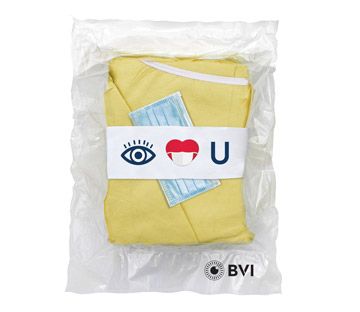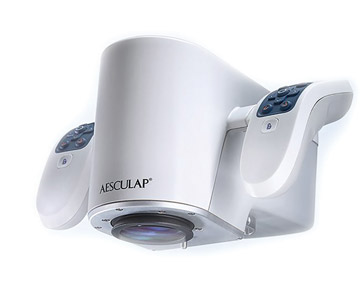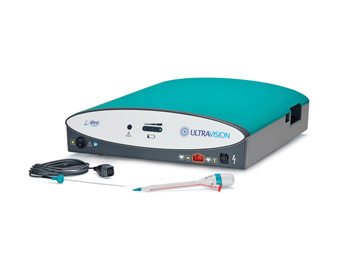
Share PPE Love With Eye Surgery Patients
BVI Patient Packs are ready-to-use packages that include a face mask, bouffant cap, shoe covers and an optional isolation gown along with easy-to-understand patient instructions. The idea is to simplify implementation and communication of PPE protocols for both patients and staff during COVID-19. The pack's eye-catching "I love you" sticker is intended to instill confidence among nervous patients returning to eye centers during the pandemic. BVI adds that the packs can ease your center's burden of sourcing trustworthy vendors for the right mix of FDA-approved ophthalmic PPE.

See Beyond the Tissue
The Aesculap Aeos Robotic Digital Microscope lets surgeons execute precision movements in neurosurgery, spine, ENT and other procedures through a multi-axis robotic arm. This heads-up platform, which can be viewed by the entire OR staff simultaneously, also provides improved ergonomics for surgeons, who often must contort their bodies in uncomfortable positions while using traditional microscopes, leading to potentially debilitating injuries over time. The platform's customizable image modes provide augmentation capabilities without the need for an overlay, along with 3D detail. Also included are fluorescent backlighting and a 10x optical zoom that delivers full resolution, regardless of magnification level.

No More Waiting for Smoke to Clear
Olympus has become the exclusive distributor of Alesi Surgical's Ultravision surgical smoke control system in the U.S. Ultravision, which has received FDA 510(k) clearance for use in laparoscopic and open surgery, suppresses aerosolization of surgical smoke and mist using the highly characterized process of electrostatic precipitation. Olympus says Ultravision has been independently shown to remove particulates as small as 0.007 ?m —smaller than any known virus —from the atmosphere, without the need for CO2 exchange. The result is improved visibility with less smoke in the visual field and reduced patient CO2 exposure. There's also no need to pause procedures while waiting for smoke to clear, removing and replacing CO2 gas or cleaning the camera lens.
.svg?sfvrsn=be606e78_3)
.svg?sfvrsn=56b2f850_5)